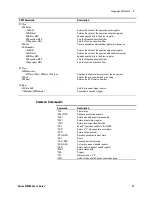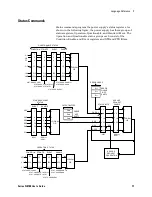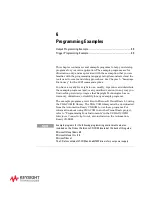
5
Language Reference
72
Series N8700 User’s Guide
Calibration Commands
Calibration commands let you enable and disable the calibration
mode, change the calibration password, calibrate current and voltage
programming, and store new calibration constants in nonvolatile
memory.
NOTE
If calibration mode has not been enabled with CALibrate:STATe, the calibration
commands will generate an error.
CALibrate:CURRent[:LEVel]
This command initiates the calibration of the output current.
CALibrate:DATA <value
>
This command enters a calibration value that you obtain by reading
an external meter. You must first select a calibration level (with
CALibrate:LEVel) for the value being entered. Data values are
entered in either volts or amperes, depending on which function is
being calibrated.
CALibrate:DATE <“date”>
CALibrate:DATE?
This command stores the date the unit was last calibrated. The data
must be of the numeric format “yyyy/mm/dd” where yyyy indicates
the year, mm indicates the month, and dd indicates the day. The
query returns the date.
CALibrate:LEVel P1|P2
This command selects the next point in the calibration sequence.
P1
is the first calibration point,
P2
is the second calibration point.
CALibrate:PASSword <password>
This command lets you change the calibration password. A new
password is automatically stored in nonvolatile memory. If the
password is set to 0, password protection is removed and the ability
to enter calibration mode is unrestricted. The default password is 0
(zero).
















































